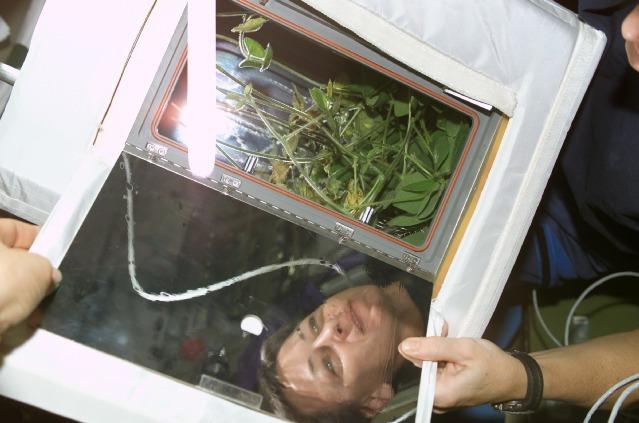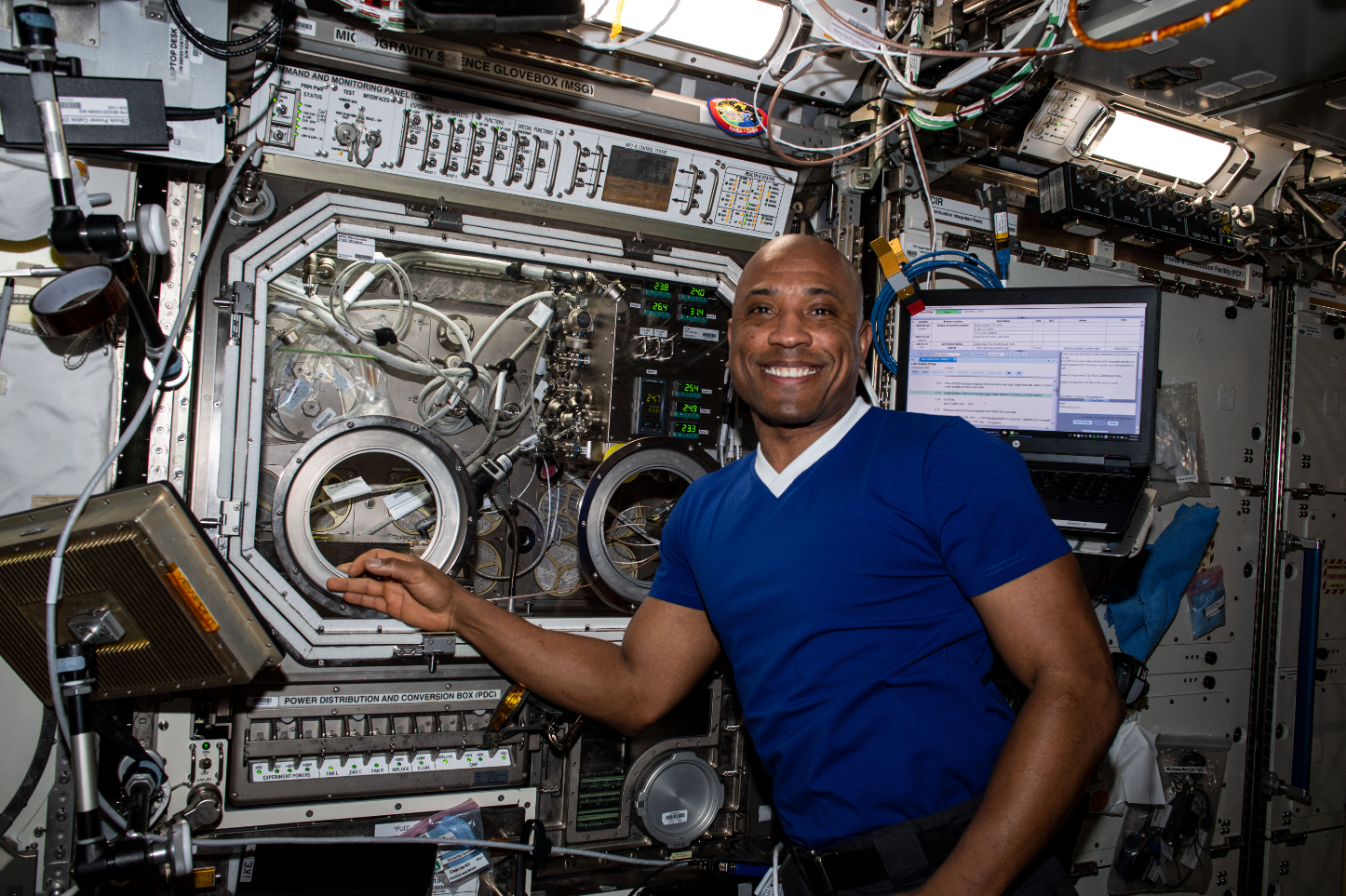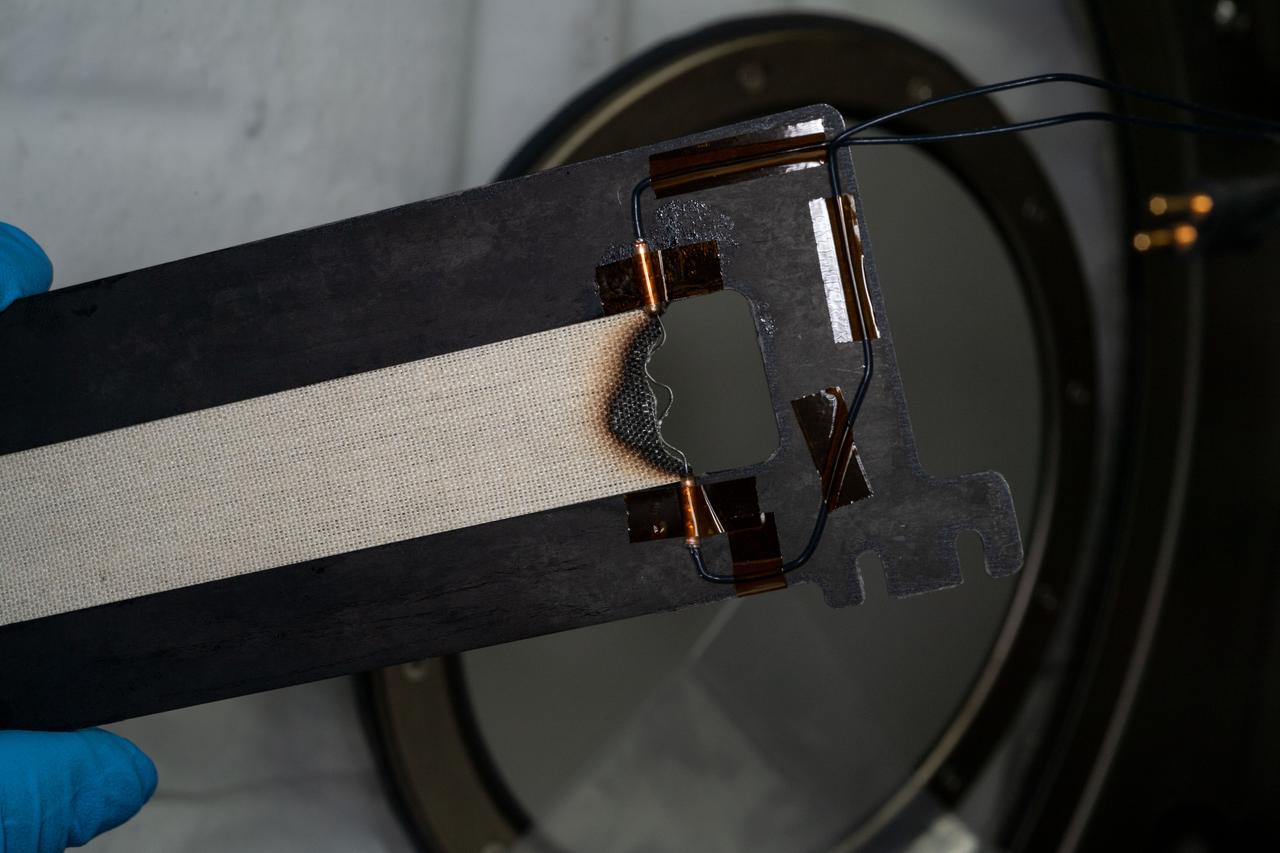Station Science Top News: July 14, 2022
Using the Advanced Astroculture (ADVASC) system, International Space Station crews successfully grew two generations of Arabidopsis plants, a model organism that is well understood and often used in fundamental biology experiments. Scientists have adapted the ADVASC system for use in air purification on Earth, with distribution everywhere from grocery stores to air purifiers during the pandemic.
The ADVASC system provides precise control of environmental parameters for plant growth, including temperature, relative humidity, light, fluid-nutrient delivery, and carbon dioxide and ethylene concentrations. Initially used to prolong the shelf life of fruits and vegetables in the grocery store, the technology drew the attention of winemakers, who used it in their cellars to enhance storage conditions. Multiple companies also now use this technology in air purifiers since it was shown to be effective in eliminating the SARS-CoV-2 virus. Companies have produced and distributed numerous purifiers during the pandemic.
This space station benefit, along with many more, will be included the International Space Station Benefits for Humanity 2022 publication, coming July 25.

Credits: NASA
***
On July 8, the Microgravity Science Glovebox (MSG) celebrated 20 years aboard the International Space Station. Since MSG’s installation, scientists from around the globe have conducted 63 experiments inside the facility, many operating multiple times. It has offered an enclosed space crucial for conducting research with liquids, flames, and particles.
ESA (European Space Agency) developed MSG in a joint venture with NASA. The glovebox is roughly 3 feet wide and 2 feet high, with a 9-cubic-foot workspace where crew members use built-in glove ports to safely manipulate research elements. Its integrated power, data acquisition, and communications systems permit researchers to pursue small and midsized investigations in the areas of fluid physics, combustion science, biotechnology, materials science, and more. The glovebox has accumulated 70,000 hours of operational time.

NASA astronaut Victor Glover works with a payload inside the Microgravity Science Glovebox aboard the International Space Station in 2021. Credits: NASA
***
The Confined Combustion investigation examined flame spread in differently shaped confined spaces in microgravity. Results showed slower spread in greater confinement and stronger flames in high-radiation conditions created by black-colored baffles. Understanding how fire spreads and behaves in space is crucial for the safety of future astronauts and for controlling fire here on Earth.
Researchers examined changes to flame spread rate in a mixed textile of cotton and fiberglass while manipulating levels of confinement and radiative feedback. Confinement level was determined by the distance between the sample and a baffle, while amount of radiative feedback depended on the material of the baffle. Across most confinement levels, flame spread increased as gas flow increased. The spread of flames in confined spaces (such as buildings and vehicles) may pose a more serious fire hazard than flame spread in open spaces because of acceleration caused by heat radiating back from the surrounding walls. Studying flames in microgravity gives researchers a better look at the underlying physics and basic principles of combustion by removing gravity from the equation.

A view of a fabric sample from the Confined Combustion investigation aboard the International Space Station. Credits: NASA







